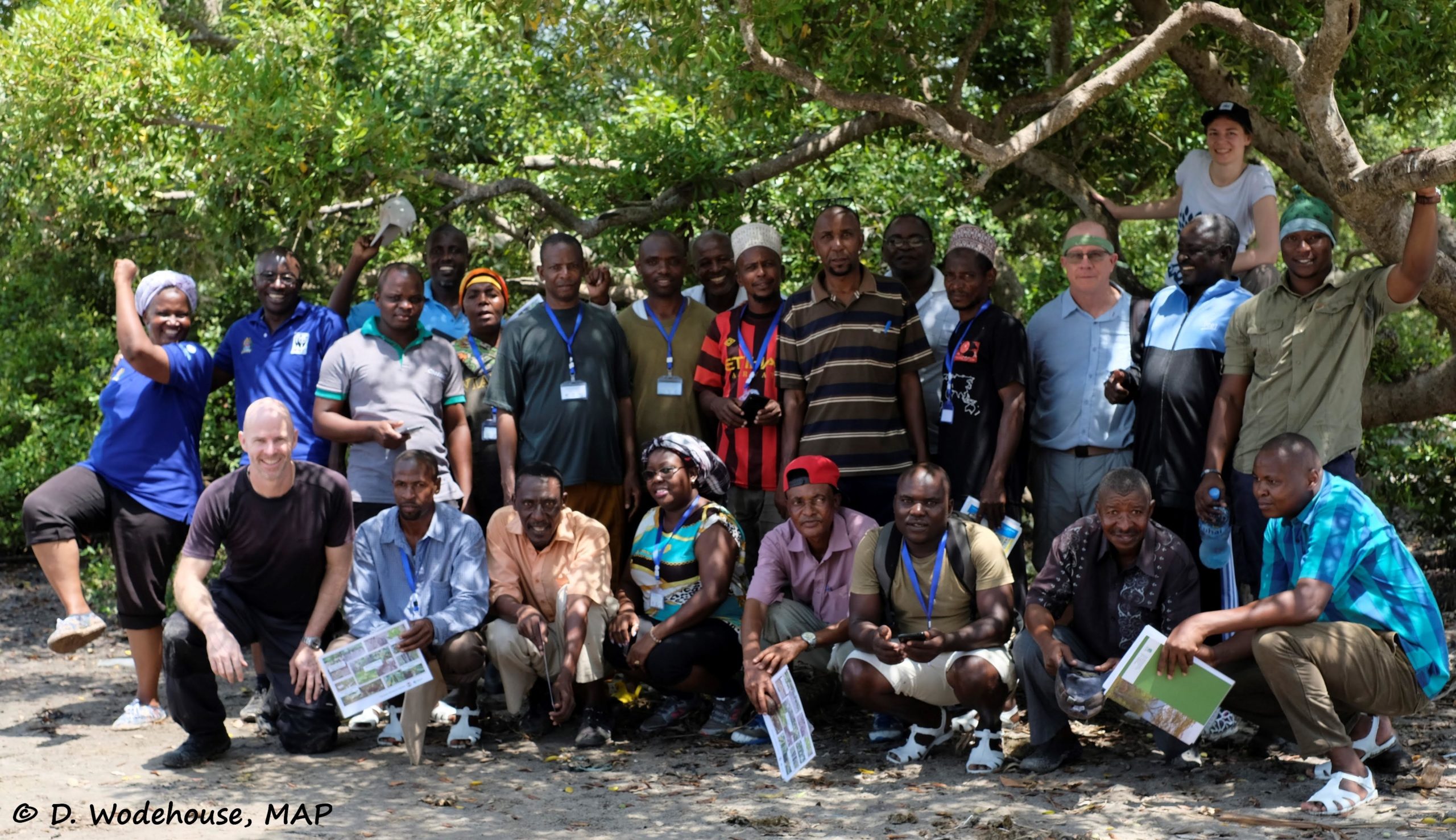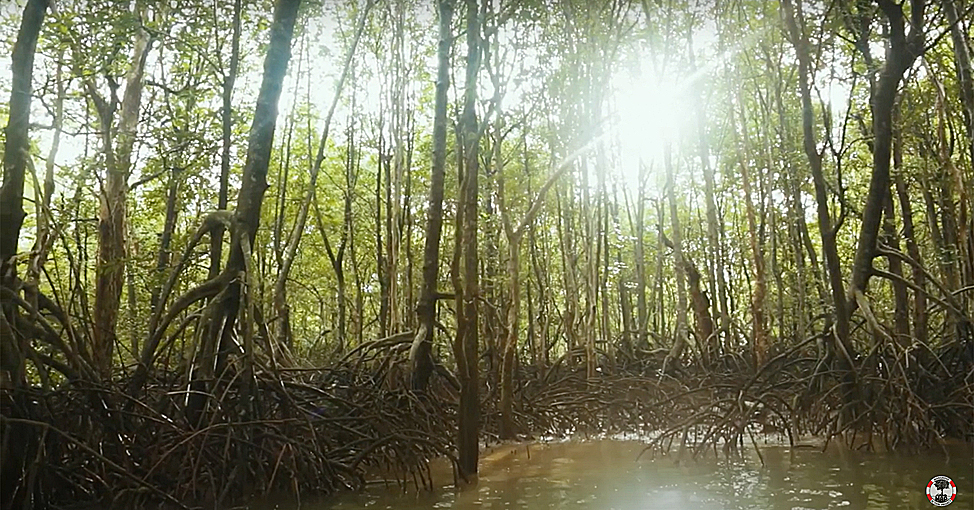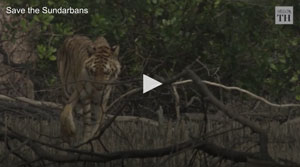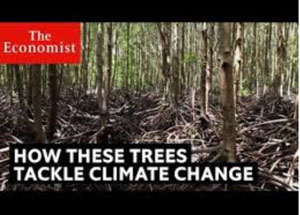FEATURE Cayman Islands Protect Mangroves

CAYMAN ISLANDS – After more than 20 years of legal action Cayman Islands’ mangroves finally have official legal protection, which should, finally, prevent these dwindling yet critically important species from being removed by developers without consequence. The protection was finalized through the adoption of a Species Conservation Plan. Cayman and international environmental organizations, including the Mangrove Action Project (MAP) have warned about the dangers of mangrove clearance for years. Since urban and tourism developments started accelerating in the early 1980s, Cayman has lost over 25% of its mangroves. With no specific penalty in place, the courts have the discretion to fine perpetrators up to half a million dollars or send them to jail for as long as four years, which is the maximum penalty for conservation law infractions. Meanwhile, Protect Our Future, a group of young people in the Cayman Islands who campaign for conservation and environmental awareness, are not letting the current lockdown stop their efforts and are using social media to campaign hard for the Caribbean-wide initiative to plant trees, including mangroves. READ MORE GLOBAL Fragmentation and connection of mangroves and wetlands around the world

GLOBAL – Two new papers led by the Global Wetlands Project (GLOW) highlight some of the challenges facing mangroves around the world. 1. In "Global trends in mangrove forest fragmentation" , published in Scientific Reports, fragmentation of mangrove habitats was mapped at a global scale. The findings show that fragmentation of habitats into patches may be a better indicator for some ecological functions than area. Additionally, this study found that many areas with high rates of mangrove loss, like south-east Asia, also have high rates of fragmentation. 2. "Integrating Outcomes of IUCN red list of ecosystems assessments for connected coastal wetlands", published in Ecological Indicators, studied a coastal wetlands region in Queensland, Australia. This region was used as a model to understand how several different ecosystems (seagrass, mangrove, and saltmarsh) are connected and rely on each other for services and long-term success. READ MORE Mangrove Photography Contest

GLOBAL – The Mangrove Action Project has just launched its 6th World Mangrove Day Photography Awards! The contest is now open and runs through the 24th of July, just in time for Mangrove Day on the 26th. Select photos will be added to a special exhibition and an expert panel will be judging entries. There will also be special prizes this year for three chosen winners. Wherever you live in the world and whether you are an amateur or professional, beginner or expert, young or old, this contest is for you! Your images have the power to inspire people and to help raise the profile of mangroves. READ MORE AFRICA A Holistic Training Approach for Tanzania's Mangroves

TANZANIA – Save our Mangroves Now! and the Mangrove Action Project are working to improve mangrove restoration efforts. In Kenya, a 2018 scoping workshop of mangrove best practice gaps in the Western Indian Ocean region highlighted the important fact that many field-based forestry officials receive limited training on mangroves within their forestry college curriculums. Their most recent training took place in Tanzania, where planting efforts were seeing high rates of failure, so the two organizations worked together on holistic community-based ecological mangrove restoration (CBEMR) trainings for both government agencies and civil society. There is interest in future trainings of this nature, including targeting government decision makers. Save Our Mangroves Now!, in its second funding cycle, is dedicated to increasing national and regional policy advocacy for mangroves in the Western Indian Ocean region. READ MORE AMERICA Group helps turn abandoned shrimp farms into carbon-storing mangrove ecosystems

USA – Along many tropical shorelines, swampy mangrove forests create habitat for fish and buffer the impact of heavy waves. “Mangroves reduce the effects of climate change, protecting coastlines against erosion and rising sea levels and hurricanes or storm surge events,” says Alfredo Quarto, cofounder of the Mangrove Action Project. He says mangrove forests also store a huge amount of carbon, so they help slow global warming. But around the world, mangrove forests have been cut down for development and agriculture. For example, in Thailand, vast areas were destroyed to make room for shrimp farms. Many of those farms have since been abandoned. So Quarto’s group is helping turn those shrimp ponds back into ecosystems where mangroves can thrive. He says the work requires more than planting seeds. For example, the group works with local communities to repair and reconnect waterways, which helps mangroves regenerate on their own. READ MORE Mass Extinctions Are Accelerating, Scientists Report

USA – We are in the midst of a mass extinction, many scientists have warned — this one driven not by a catastrophic natural event, but by humans. The unnatural loss of biodiversity is accelerating, and if it continues, the planet will lose vast ecosystems and the necessities they provide, including fresh water, pollination, and pest and disease control. Recently, there was more bad news: We are racing faster and closer toward the point of collapse than scientists previously thought, according to research published in the Proceedings of the National Academy of Sciences. The extinction rate among terrestrial vertebrate species is significantly higher than prior estimates, and the critical window for preventing mass losses will close much sooner than formerly assumed — in 10 to 15 years. “We’re eroding the capabilities of the planet to maintain human life and life in general,” said Gerardo Ceballos, an ecologist at the National Autonomous University of Mexico and lead author of the new study. The current rate of extinctions vastly exceeds those that would occur naturally, Ceballos and his colleagues found. Scientists know of 543 species lost over the last 100 years, a tally that would normally take 10,000 years to accrue. “In other words, every year over the last century we lost the same number of species typically lost in 100 years,” Ceballos said. READ MORE ASIA Nature's wrath ruins mangrove plantation, leaves city more vulnerable to cyclones

INDIA – Experts will urge the state government to impose tax on the people of Kolkata to save the mangrove plantation in Sunderbans for safety and security of the city during heavy cyclone. There has been constant onslaught on the mangrove plantation since 2009 when Aila had devastated the area. Subsequently two cyclones Bulbul and Phani had also affected the trees. Cyclone Amphan which had hit the 48 islands where Mangrove trees grow exclusively caused extensive damage to the island. Not only, the mangrove trees, thousands of trees that have been uprooted in 54 islands function as a shield that protect Kolkata from the ill effects of cyclone or super cyclone. A mangrove tree takes 5 to 7 years to grow.Experts said due to the felling of thousands of trees, Kolkata has become vulnerable to cyclones and super cyclones. It may be recalled that in 1737, the cyclone which had hit the city claimed 30,000 lives and most of the mud houses were razed to the ground. The experts maintained that the frequency of cyclones in Bay of Bengal has gone up due to loss of biodiversity and global warming. If the tree barriers become weak, the wind will hit Kolkata directly. They maintained had the mangrove trees not been there in Sunderbans, the cyclone Amphan would have hit the city with windspeed anything between 180km per hour and 190 km per hour instead of 135 km per hour and 140 km per hour with which it had hit Kolkata. READ MORE Black Day For Sundarbans: How Cyclone Amphan Has Left India's Heritage Mangrove Forest In Ruins

INDIA – The Sundarbans is a cluster of low-lying islands in the Bay of Bengal, spread across India and Bangladesh, famous for its unique mangrove forests. But sadly, nothing is left anymore, ever since cyclone Amphan made its way to Bengal. Trees have fallen, lands have become barren and crops have also been destroyed. Apparently, the storm bought so much salt water spray from the sea that it even killed the trees it that survived its speed. That's not all though. Even wildlife has been affected with the devastating affects of the cyclone as Sundarbans is known as a UNESCO world heritage site for rare and endangered species. For those who don't know, the Sundarban forest reserve is home to 96 protected tigers and all their lives have been put in danger. READ MORE Watch | Sundarbans mangrove forests face existential threat

INDIA – A video on the world's largest mangrove forest and the importance of conserving it The Sundarbans is a cluster of low-lying islands in the Bay of Bengal, spread across the coast of India and Bangladesh.It holds the world's largest mangrove forest with an area of about 10,000 sq km of which 60% is in Bangladesh and the rest in India. The mangroves of Sundarbans provide sustainable livelihoods to millions of people and functions as a protective barrier for its inhabitants from natural calamities. WATCH VIDEO LAST WORD Dear Mr. Alfred Quarto,
International Development Director,
Mangrove Action Project. Dear Sir, I am very much thankful to you for your kind concern to take up the issue of protection of Mangroves in Kakinada city of Andhra Pradesh state in India as part of your global mission of Mangrove Action Project. World over the human greed is taken over their consciousness towards the protection of environment, India is not an exception to it. In a way Covid-19 tried has tried to put us in the right perspective.
It's time for all environment consciousness people join together to protect natural resources on our planet. I request the global Mangrove Protection fraternity to help us in protecting the Mangroves in India as part of your MAP. Bolisetty Satyanarayana
Environment Conservationist
+919849152757 bolisettisatyanarayana@gmail.com
READ THE LETTER
Like this newsletter?
Pease consider donating to MAP to keep it going.
Giving could never be easier | INTERVIEW – Yale Climate Connection interview with MAP's Alfredo Quarto LISTEN DID YOU KNOW?
 CHILDREN'S ART CALENDAR  ACTION ALERTS International Day for Biodiversity
May 22, 2020 – READ MORE Save Kakinada mangrove forest – Sign the Petition World Turtle Day May 23, 2020 – View More Enough! Pledging zero tolerance to attacks against environmental and human rights defenders. SIGN THE PETITION PETITION – Save Malaysia's Sea Turtles
A proposed land reclamation project and sand mining in Malaysia threaten a nesting ground of vulnerable Olive Ridley turtles and a marine biodiversity hotspot.. Please SIGN! PETITION – Save Penang! Reject the 3-Islands Reclamation!
The lack of public consultation and detailed information about the project is shocking in view of the size of proposed reclamation which is 4,500 acres or 7 square miles
PLEASE SIGN
PETITION – Save Pulau Kukup National Park – second largest mangrove island in the world. Sign The Petition Like this newsletter? Pease consider donating to MAP to keep it going. Giving could never be easier 
Mangrove Restoration Map VIEW MAP HERE 
Restoring The Natural Mangrove Forest
Watch movie 
Community Based Ecological Mangrove Restoration in Rufiji Delta VIEW VIDEO Video: Mangroves for the Future – A look bacK. As the latest phase of Mangroves for the Future (MFF) draws to a close, this video highlights some of the project’s most successful initiatives – from local women supporting national park management in Viet Nam to an island in the Maldives that has become a model for waste management, and everything in between. View Here WANT TO GET INVOLVED?
Follow and Join MAP!
   
Like this newsletter? Pease consider donating to MAP to keep it going. Giving could never be easier 

VOLUNTEER OPPORTUNITY 
MANGROVE ISSUES Want to learn more about mangroves?
Our short presentation will give you a better understanding of the issues we are working to solve. WATCH PRESENTATION What is CBEMR? Download MAP's 2 page CBEMR Information Sheet containing links to all MAP's CBEMR resources – CLICK HERE What is EPIC? – The Ecosystems Protecting Infrastructure and Communities (EPIC) project: the role of ecosystems as protective barriers against climate induced hazards MANGROVES APP AVAILABLE
A pictorial field guide for easy identification of various mangrove species and learning about the mangroves ecosystem. CLICK HERE View MAP’s uploaded Videos at MAPmangrover’sChannel
Question Your Shrimp Consumer/Markets Campaign!
WATCH VIDEO WATCH – Mangroves: how they help the ocean
 Mangrove Restoration in Asia – Watch Short Video The Value of Mangrove Forests View Video CBEMR Experience Exchange MAP 2017 English Subtitles
VIEW THE VIDEO Mangroves: Guidebook to Malaysia – Click Here
Mangrove rehabilitation in Asia – Local Action and cross-border Transfer of Knowledge for the Conservation of Climate, Forests and Biodiversity VIEW VIDEOS HERE SHARE MAP'S VISION
CLICK HERE to watch short introductory video. Together we can work "at the roots of the sea". Our short documentary, Reducing the Risk of Disaster through Nature-Based Solutions : Mangroves

Exclusive Interview with Alfredo Quarto, Co-Founder and Executive Director of Mangrove Action Project – See more
Marvellous Mangroves Curriculum The Marvellous Mangroves Education Forum is an online hub for those utilizing the Marvellous Mangroves (MM) Curriculum. It gives students, teachers and anyone interested in mangroves, the opportunity to learn and share ideas themed around the curriculum, to connect and communicate with others around the globe whilst exploring mangroves from your computer or on the go. VISIT 
The award-winning Marvellous Mangroves (MM) curriculum educates children on the importance of mangroves and their ecological functions, teaching them about modern challenges and mechanisms for sustainability. VIEW VIDEO Marvellous Mangroves Curriculum in Bangladesh – WATCH VIDEO
MARVELLOUS MANGROVES IN BRAZIL
En Portuges 
Marvellous Mangroves – A Curriculum-Based Teachers Guide. FOR MORE ON MAPs AWARD WINNING CHINA MANGROVE CURRICULUM VISIT

VIMEO SHOW
VISIT OUR "MM" WEBPAGE Check out our presentation for more details on Marvellous Mangroves Read this 10 page history of the development of MAP’s educational curriculum VIEW DOCUMENT
Article in Canada's Green Teacher Magazine – Read More
Like this newsletter? Pease consider donating to MAP to keep it going. Giving could never be easier 
Green Planet Fundraising Assists MAP – LEARN MORE
Volunteer Opportunities with Mangrove Action Project CLICK HERE
"Question Your Shrimp" Campaign Question Your Shrimp- Don't Buy or Sell Imported Tropical Shrimp! Sign the Petition Learn more about the affects of the shrimp industry on mangroves by visiting our blog
Editor’s Note: Mangrove Action Project’s Executive Director, Alfredo Quarto was interviewed about shrimp by Green Acre Radio’s Martha Baskin
LISTEN TO INTERVIEW Sign the Consumer's Pledge to avoid imported shrimp
Not yet a MAP News subscriber?
Click here to subscribe. Note to Our Readers: We strive to keep active links in our newsletter. However, due to circumstances beyond our control, occasionally links to stories may become broken. If you find a link to a story is not functioning, please cut and paste the headline into your browser search bar. In most cases you should be able to locate the original story.
|


























